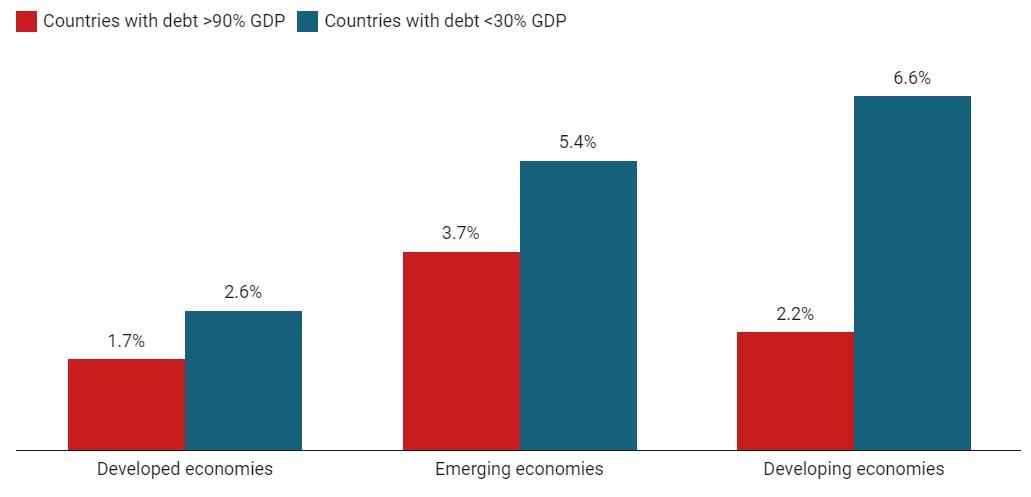This article argues that exorbitant increases in public debt, such as those seen in 2020, are not free. It examines the potential economic effects of accumulating vast quantities of public debt.
The First Problem: Less Economic Growth
The countries with the greatest amount of public debt saw per capita income grow the least, as seen in chart 1.
Chart 1: GDP Growth per Capita

Source: Kumar and Woo. Created with Datawrapper
The economic mechanism that explains this statistical relationship is relatively simple. An excessive public debt causes the so-called expulsion effect, in which credit is redirected from the private sector to the public sector. The growth of public debt deprives the private sector of loanable funds, reducing the generation of wealth. (It is the private sector that generates economic activity. The most the public sector can aspire to do is to establish a framework that favors private endeavors.)
The Second Problem: Disincentivizing Investment and Reducing Productivity
This second problem is an extension of the first. One of the best indicators of an economy’s future growth is its investment rate. When investment increases, so too does productivity, which is accompanied by economic growth.
…click on the above link to read the rest of the article…